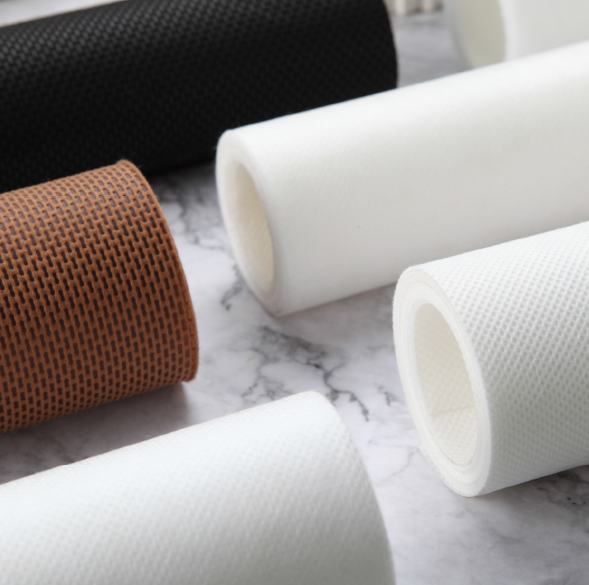রিসাইক্লিংPET spunbond nonwoven ফ্যাব্রিকএকটি মূল্যবান প্রক্রিয়া যা স্থায়িত্ব প্রচার করে এবং পরিবেশগত প্রভাব হ্রাস করে। প্রযুক্তি এবং অবকাঠামো উন্নত হওয়ার সাথে সাথে পুনর্ব্যবহৃত পিইটি স্পুনবন্ডের ব্যবহার আরও ব্যাপক হয়ে উঠবে বলে আশা করা হচ্ছে।চীন পোষা spunbond nonwoven ফ্যাব্রিকবেশিরভাগই ব্যবহৃত হয়।

1. সংগ্রহ এবং বাছাই:
সংগ্রহ: PET স্পুনবন্ড ননওভেন ফ্যাব্রিক বিভিন্ন উৎস থেকে সংগ্রহ করা হয়, যার মধ্যে রয়েছে ভোক্তা-পরবর্তী বর্জ্য (যেমন, ব্যবহৃত পোশাক, প্যাকেজিং এবং ডিসপোজেবল পণ্য) এবং শিল্প বর্জ্য (যেমন, ম্যানুফ্যাকচারিং স্ক্র্যাপ)।
বাছাই: সংগৃহীত উপকরণগুলিকে অন্যান্য ধরনের টেক্সটাইল এবং প্লাস্টিক থেকে PET স্পুনবন্ডকে আলাদা করার জন্য সাজানো হয়। এটি প্রায়শই ম্যানুয়ালি বা স্বয়ংক্রিয় সাজানোর সিস্টেম ব্যবহার করে করা হয়।
2. প্রাক-চিকিৎসা:
পরিষ্কার করা: বাছাই করা PET স্পুনবন্ড ফ্যাব্রিক ময়লা, ধ্বংসাবশেষ এবং অন্যান্য দূষিত পদার্থ অপসারণ করতে পরিষ্কার করা হয়। এটি ধোয়া, শুকানো এবং কখনও কখনও রাসায়নিক চিকিত্সা জড়িত হতে পারে।
টুকরো টুকরো টুকরো টুকরো টুকরো টুকরো টুকরো টুকরো টুকরো টুকরো টুকরো টুকরো টুকরো টুকরো টুকরো টুকরো টুকরো টুকরো টুকরো টুকরো টুকরো টুকরো টুকরো টুকরো টুকরো টুকরো টুকরো টুকরো টুকরো টুকরো টুকরো টুকরো টুকরো টুকরো টুকরো টুকরো টুকরো টুকরো টুকরো টুকরো টুকরো টুকরো টুকরো টুকরো টুকরো টুকরো টুকরো টুকরো টুকরো টুকরো টুকরো টুকরো টুকরো টুকরো টুকরো টুকরো টুকরো টুকরো টুকরো টুকরো টুকরো টুকরো টুকরো টুকরো টুকরো টুকরো টুকরো টুকরো টুকরো টুকরো টুকরো টুকরো টুকরো টুকরো টুকরো টুকরো টুকরো টুকরো টুকরো টুকরো টুকরো টুকরো টুকরো টুকরো টুকরো টুকরো টুকরো টুকরো করা হয়।
3. পুনঃপ্রক্রিয়াকরণ:
গলে যাওয়া: ছিন্ন করা পিইটি স্পুনবন্ড ফ্যাব্রিক উচ্চ তাপমাত্রায় গলে যায়। এটি পলিমার চেইন ভেঙ্গে কঠিন পদার্থকে তরল অবস্থায় রূপান্তরিত করে।
এক্সট্রুশন: গলিত PET তারপর ডাই এর মাধ্যমে বের করা হয়, যা এটিকে ফিলামেন্টে আকার দেয়। এই ফিলামেন্টগুলি তারপর নতুন ফাইবারে পরিণত হয়।
ননবোভেন ফরমেশন: স্পুন ফাইবারগুলিকে নীচে রাখা হয় এবং একটি নতুন ননবোভেন ফ্যাব্রিক তৈরি করার জন্য একত্রে বন্ধন করা হয়। এটি বিভিন্ন পদ্ধতি ব্যবহার করে করা যেতে পারে, যেমন সুই খোঁচা, তাপ বন্ধন, বা রাসায়নিক বন্ধন।
4. সমাপ্তি:
ক্যালেন্ডারিং: নতুন ননবোভেন ফ্যাব্রিক প্রায়শই এর মসৃণতা, শক্তি এবং ফিনিস উন্নত করার জন্য ক্যালেন্ডার করা হয়।
রঞ্জনবিদ্যা এবং মুদ্রণ: ফ্যাব্রিক বিভিন্ন রং এবং প্যাটার্ন তৈরি করতে রঙ্গিন বা মুদ্রণ করা যেতে পারে।
5. অ্যাপ্লিকেশন:
পুনর্ব্যবহৃত পিইটি স্পুনবন্ড ননবোভেন ফ্যাব্রিকটি ভার্জিন পিইটি স্পুনবন্ডের মতো বিস্তৃত অ্যাপ্লিকেশনে ব্যবহার করা যেতে পারে, যার মধ্যে রয়েছে:
পোশাক এবং পোশাক
জিওটেক্সটাইল
প্যাকেজিং
শিল্প এবং প্রযুক্তিগত অ্যাপ্লিকেশন
বিবেচনা করার মূল পয়েন্ট:
গুণমান:পুনর্ব্যবহৃত পিইটি স্পুনবন্ড ফ্যাব্রিকভার্জিন উপাদানের তুলনায় সামান্য ভিন্ন বৈশিষ্ট্য থাকতে পারে, যেমন নিম্ন প্রসার্য শক্তি বা কম মসৃণ ফিনিস। যাইহোক, পুনর্ব্যবহারযোগ্য প্রযুক্তির অগ্রগতি পুনর্ব্যবহৃত পিইটি স্পুনবন্ডের গুণমানকে উন্নত করছে।
বাজারের চাহিদা: ভোক্তা এবং ব্যবসাগুলি আরও টেকসই বিকল্প খোঁজার কারণে পুনর্ব্যবহৃত PET স্পুনবন্ড ফ্যাব্রিকের চাহিদা বাড়ছে।
পরিবেশগত সুবিধা: পিইটি স্পুনবন্ড ফ্যাব্রিক পুনর্ব্যবহার করা ল্যান্ডফিল বর্জ্য হ্রাস করে, প্রাকৃতিক সম্পদ সংরক্ষণ করে এবং গ্রিনহাউস গ্যাস নির্গমন কমায়।
চ্যালেঞ্জ:
দূষণ: অন্যান্য উপকরণ থেকে দূষণ পুনর্ব্যবহৃত PET স্পুনবন্ডের গুণমানকে প্রভাবিত করতে পারে।
খরচ: পিইটি স্পুনবন্ড ফ্যাব্রিক পুনর্ব্যবহার করা ভার্জিন উপাদান ব্যবহার করার চেয়ে বেশি ব্যয়বহুল হতে পারে।
পরিকাঠামো: সফল পুনর্ব্যবহার করার জন্য PET স্পুনবন্ড ফ্যাব্রিক সংগ্রহ, বাছাই এবং পুনরায় প্রক্রিয়াকরণের জন্য একটি শক্তিশালী অবকাঠামো অপরিহার্য।
পোস্ট সময়: আগস্ট-19-2024
